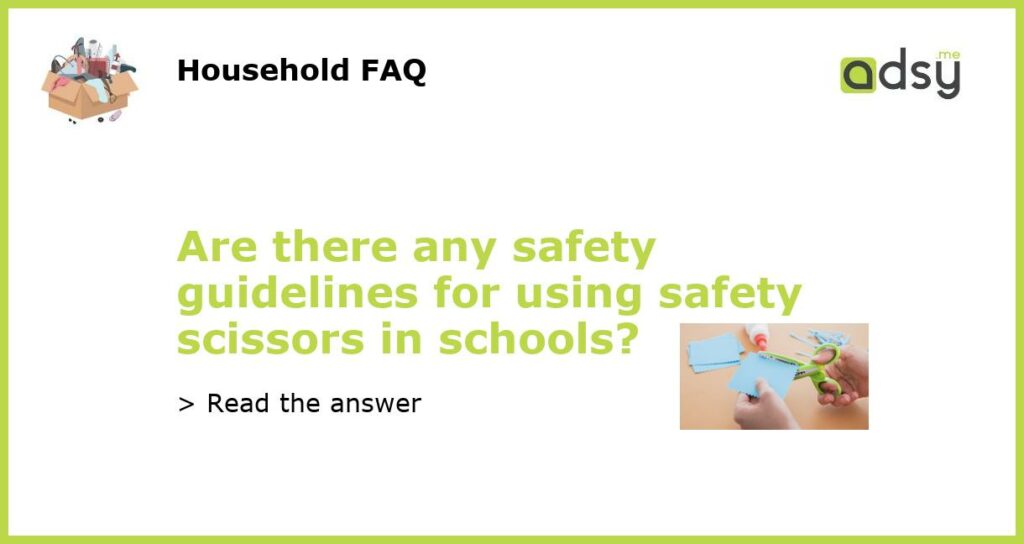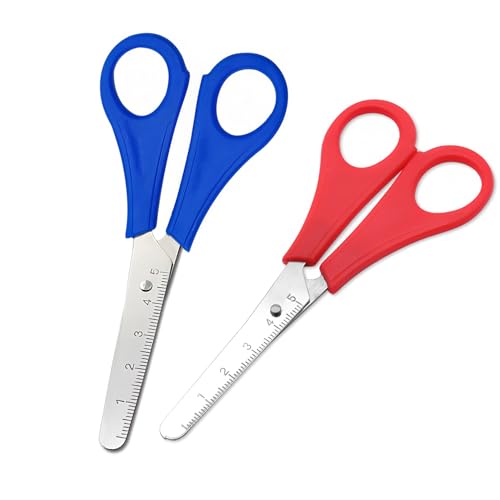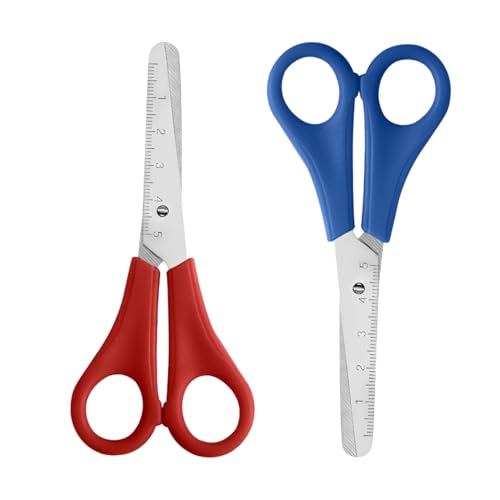Understanding Safety Guidelines for Using Safety Scissors in Schools
In schools, safety is always a top priority. From the classroom environment to the activities conducted, it is essential to ensure that students are protected from potential dangers. When it comes to using tools such as scissors, safety measures need to be in place to minimize the risk of accidents. Safety scissors are specifically designed for use by children, with features that reduce the likelihood of injury. This article will explore the safety guidelines for using safety scissors in schools.
What are Safety Scissors?
Safety scissors are specially crafted cutting tools designed with child safety in mind. With rounded tips and blades that lack sharp cutting edges, these scissors are intended to minimize the risk of accidents. They often feature plastic handles for better grip and control, ensuring that young students can use them comfortably and safely. Safety scissors are commonly used in schools for various arts and crafts activities, such as cutting paper, cardboard, or other materials.
Choosing the Right Safety Scissors
When selecting safety scissors for school use, it is crucial to consider a few factors. Firstly, ensure that the scissors are appropriate for the age group of the students. Scissors designed for younger children may have larger handles and shorter blades to accommodate their smaller hands. Additionally, check that the scissors have round-tipped blades to avoid accidental punctures or cuts. Look for models with a spring mechanism that automatically opens the blades after each cut, reducing strain on the hand.
Implementing Safety Measures
Once you have the right safety scissors for your students, it is important to establish and enforce safety guidelines. Here are some key measures to consider:
- Supervision: Ensure that a responsible adult or teacher is present whenever children are using scissors. They can provide guidance, instruction, and intervene if necessary.
- Demonstration: Begin by demonstrating proper scissor handling and techniques to the students. Show them how to hold the scissors correctly and cut away from their body.
- Rules: Establish clear rules regarding scissor usage. These can include guidelines such as not running with scissors, never cutting hair or clothing, and only using scissors on approved materials.
- Storage: When not in use, store safety scissors in a designated area where they are out of reach of younger children. This prevents accidental access and misuse.
- Maintenance: Regularly inspect the scissors for any damage or wear. Replace any worn-out or broken scissors to ensure the safety of the students.
Teaching Scissor Safety
In addition to implementing safety measures, educating students about scissor safety is essential to minimize accidents. Here are some tips for teaching scissor safety:
- Proper Gripping: Teach students how to hold the scissors correctly, with their thumb in one handle hole and their fingers in the other. This grip provides better control and reduces the risk of slipping.
- Cutting Techniques: Show students how to position their hand and guide the scissors along the cutting line. Emphasize the importance of keeping their fingers away from the blades.
- Responding to Accidents: Teach students what to do in case of an accident, such as immediately notifying a teacher or adult and seeking first aid if necessary.
- Practice and Reassurance: Allow students to practice using scissors while closely monitoring their progress. Offer reassurance and positive feedback as they develop their scissor skills.
Safety guidelines for using safety scissors in schools are crucial for protecting students and preventing accidents. By choosing the right scissors, implementing safety measures, and teaching scissor safety, educators can ensure a safe classroom environment for their students. Remember, supervision, instruction, and providing the necessary tools are key when it comes to utilizing safety scissors in schools.





![HELIX OXFORD Childrens Kids Scissors 13cm Round Ended Craft Scissors [Pack of 2 Pairs]](https://m.media-amazon.com/images/I/41pqHuHNlOL.jpg)
